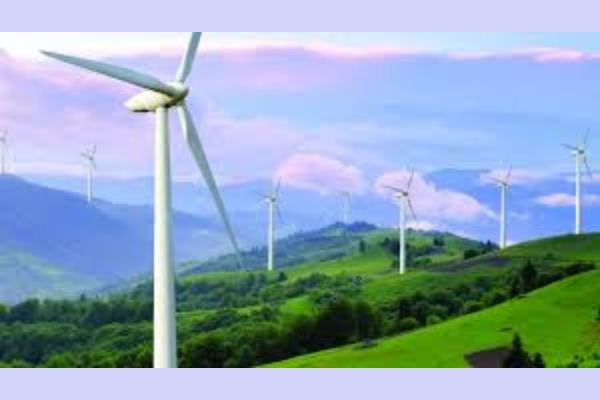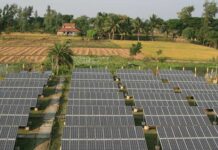The world is at a turning point in its transition toward renewable energy. Among all sustainable sources, wind energy has emerged as a crucial pillar in reducing global carbon emissions and building a clean, resilient, and sustainable energy future. According to industry projections, the global wind energy market is expected to exceed USD 543.9 billion by 2034, signaling a period of extraordinary growth driven by technological innovation, supportive government policies, and increasing demand for low-carbon energy solutions.
The Wind Energy Boom: A Snapshot
Wind energy, both onshore and offshore, has shown remarkable traction in recent years. Countries across Europe, Asia-Pacific, North America, and even parts of Africa and Latin America are investing heavily in wind farm infrastructure. The market’s estimated size of USD 543.9 billion by 2034 represents a significant increase from its 2024 valuation, suggesting a compound annual growth rate (CAGR) that underscores the sector’s momentum.
Key factors propelling this growth include:
- Declining costs of wind turbine components
- Increased efficiency of modern wind turbines
- Government incentives and renewable energy targets
- Corporate sustainability goals pushing demand for clean energy
- Rising electricity consumption due to urbanization and electrification
Onshore vs. Offshore: A Balanced Push
The wind energy sector is largely divided into onshore and offshore segments.
- Onshore wind energy continues to dominate in terms of installations due to its lower capital costs and faster deployment timelines. Countries like the U.S., China, India, and Germany have led onshore development with robust support policies and vast open spaces ideal for wind farms.
- Offshore wind, although more expensive, is gaining traction rapidly due to its higher efficiency, stronger wind speeds, and lower land-use conflicts. Markets in the U.K., Denmark, the Netherlands, and increasingly, the U.S. and China, are investing heavily in offshore capacity. Floating wind turbines, an emerging technology, are set to unlock even more potential in deeper waters.
Key Regional Markets
1. Asia-Pacific
The Asia-Pacific region is poised to lead the wind energy market over the forecast period. China, already the world leader in installed wind capacity, continues to expand both onshore and offshore projects aggressively. India is also scaling up its wind capacity under national renewable energy programs.
2. Europe
Europe remains a global pioneer in wind technology, especially offshore. With the European Green Deal and the continent’s commitment to becoming climate-neutral by 2050, countries like Germany, the U.K., and the Netherlands are setting benchmarks for wind infrastructure and energy storage integration.
3. North America
The United States is experiencing a renaissance in wind energy investments, fueled by the Inflation Reduction Act (IRA) and state-level renewable mandates. Major offshore wind projects are underway along the East Coast, marking a new chapter for U.S. clean energy.
4. Rest of the World
Emerging markets in Africa and Latin America are beginning to explore wind energy as a way to ensure energy security and access while minimizing environmental impact. Countries like Brazil, South Africa, and Morocco are notable newcomers with promising potential.
Technological Innovations Driving Growth
Several technological trends are contributing to the wind energy market’s exponential growth:
- Taller turbines and longer blades allow for greater energy capture, even in low-wind areas.
- AI and machine learning are optimizing maintenance and forecasting, reducing downtime and increasing efficiency.
- Hybrid renewable systems, combining wind with solar and battery storage, are enhancing reliability and grid integration.
- Floating wind platforms are expected to revolutionize offshore wind development in deep-water locations.
Government Policies and Incentives
Policy support plays a crucial role in the wind energy market’s success. Incentives such as feed-in tariffs, renewable portfolio standards, tax credits, and green bonds are encouraging both public and private investment in wind infrastructure.
For example:
- The U.S. Production Tax Credit (PTC) and Investment Tax Credit (ITC) have historically accelerated wind adoption.
- The European Union’s Recovery and Resilience Facility allocates significant funds for renewable energy, including wind.
- Countries like India offer viability gap funding (VGF) and accelerated depreciation benefits for wind projects.
Environmental and Economic Impact
Wind energy offers a clean, sustainable alternative to fossil fuels, contributing to the reduction of greenhouse gas emissions and improving air quality. Moreover, the industry is becoming a major job creator, employing millions worldwide in manufacturing, installation, maintenance, and operations.
Some environmental benefits include:
- Zero emissions during operation
- Minimal water usage
- Reduced dependence on imported fossil fuels
Economically, communities benefit from land lease payments, tax revenues, and employment opportunities tied to wind projects.
Challenges Ahead
Despite its promising future, the wind energy industry faces several challenges:
- Grid integration issues, particularly in remote areas
- Supply chain constraints and raw material shortages
- Community opposition in some regions due to land use and aesthetic concerns
- Intermittency and the need for reliable energy storage solutions
Addressing these challenges through policy reform, public engagement, and technological advancement will be key to sustaining long-term growth.
Conclusion
The forecasted growth of the wind energy market to over USD 543.9 billion by 2034 marks a significant milestone in the global clean energy transition. As nations intensify their efforts to combat climate change, wind power is no longer just an alternative—it is becoming a mainstream energy source. Through strategic investments, policy support, and innovative technologies, the world is truly beginning to ride the wind toward a sustainable future.






![SMART ENERGY WEEK [September] 2025 to Lead Global Renewable Energy Advancements SMART ENERGY WEEK](https://timestech.in/wp-content/uploads/2025/07/Untitled-design-2025-07-31T112230.406-218x150.jpg)










